H.R. 1 of the 119th Congress, aka the One Big Beautiful Bill Act (OBBBA), was signed into law on July 4, 2025. This legislation is a comprehensive reimagining of how America supports working families. For benefits professionals, this sweeping reform presents both novel opportunities and immediate challenges that will reshape the employee benefits landscape for years to come.
At its core, the OBBBA recognizes a fundamental truth: today’s workers are juggling more responsibilities than ever before. Between rising childcare costs, healthcare expenses, and student debt burdens, employees need benefits that actually work for their lives. Here are some primary ways in which the OBBBA addresses these real-world pressures while creating new opportunities for employers to differentiate their benefits packages.
How the OBBBA Will Transform Your Employee Benefits Strategy: Content Guide
HSAs: Expanded Access and Enhanced Benefits
One of the most significant provisions in the OBBBA is the expansion of Health Savings Account (HSA) benefits. The Act makes changes to broaden their scope, increase utilization, and bolster savings potential. It provides new opportunities to include HSAs as part of a comprehensive employee benefits strategy.
Bronze and Catastrophic Plan Eligibility
The most impactful change is that starting January 1, 2026, individuals enrolled in bronze and catastrophic ACA plans will be eligible to contribute to HSAs. This provision opens the Health Savings Account opportunity to 7.2 million Americans who were previously ineligible due to their plan type.
For employers, this represents a massive expansion of the potential HSA-eligible workforce. Bronze plans, which typically have lower premiums but higher deductibles, now become pathways to HSA eligibility. This change allows employers to offer HSAs to a broader range of employees, including those who might have previously chosen bronze plans for affordability reasons.
Permanent Telehealth Safe Harbor
The OBBBA makes permanent the safe harbor that allows plans to be treated as high-deductible health plans despite not having a deductible for telehealth services. This provision is effective retroactively to plan years beginning after December 31, 2024.
Previously, this telehealth exception required periodic renewals and created uncertainty for plan sponsors. The permanent safe harbor eliminates this administrative burden and allows employers to confidently design HDHPs that provide first-dollar telehealth coverage without jeopardizing HSA eligibility for participants.
Direct Primary Care Integration
Direct Primary Care (DPC) arrangements are now HSA-eligible, as long as DPC fees do not exceed certain thresholds. This integration allows employees to use HSA funds for DPC membership fees, creating new opportunities for employers to offer innovative healthcare delivery models while maintaining HSA compatibility.
Strategic Implications of the HSA Provisions
For employers, TPAs, and group insurance brokers, these enhancements position HSAs as increasingly attractive benefits offerings. The broadened eligibility means significantly more employees can take advantage of the triple tax benefit HSAs provide, potentially reducing healthcare costs across the board while offering employees greater control over their healthcare spending.
The permanent telehealth safe harbor provides plan design flexibility that was previously temporary, allowing for more confident long-term benefits strategy development. Combined with DPC integration, employers now have more tools to create innovative, cost-effective healthcare benefits packages that maintain HSA eligibility.

Dependent Care FSA Limit Increases
One of the most impactful changes for working parents involves dependent care Flexible Spending Accounts (FSAs). Effective for tax years beginning after Dec. 31, 2025 (i.e., January 2026 and beyond), the dependent care FSA limit is increased to $7,500 ($3,750 for married couples filing separately). This limit is not indexed for inflation.
The substantial increase from the current $5,000 limit provides meaningful relief for families struggling with childcare costs. This is the first significant enhancement to these accounts since their inception in 1986, marking a historic shift that finally acknowledges what we’ve all known: the world of childcare has undergone a fundamental transformation.
For benefits professionals, this change creates immediate opportunities. It’s time to reassess dependent care strategies and launch communication campaigns to help employees understand the new limits. It also gives your employer clients a chance to position their organization’s family benefits as competitive advantages in today’s tight labor market.
Student Loan Assistance: Permanent Tax-Free Treatment with Inflation Indexing
One of the most significant provisions for employers offering student loan benefits is the permanent extension of tax-free employer-sponsored student loan repayment assistance under Section 127. This provision was set to expire on January 1, 2026, but the OBBBA makes it permanent and adds inflation indexing for future years.
Under Section 127, employers can provide up to $5,250 annually in tax-free compensation to employees for qualified educational expenses, including student loan repayment. These benefits are excluded from federal income tax withholding, Social Security tax, Medicare tax, and federal unemployment (FUTA) tax.
Perhaps even more significant for long-term planning, the Act indexes the $5,250 annual limit to inflation after 2026. The inflation indexing ensures that the purchasing power of employer-provided student loan assistance will be maintained over time, making these benefits increasingly valuable as education costs continue to rise.
With student loan debt affecting millions of workers, permanent tax-free assistance becomes a more compelling recruitment and retention benefit, particularly for younger employees. Organizations not currently offering student loan assistance should evaluate whether the permanent status and inflation protection make these benefits more attractive as part of their overall employee benefits strategy.
Introducing Trump Accounts
Perhaps the most innovative aspect of the OBBBA is the creation of Trump Accounts, tax-advantaged savings vehicles specifically designed for children. These accounts represent a completely new category of employee benefit that forward-thinking employers should consider.
The federal government will seed these accounts with $1,000 for children born between January 1, 2025, and December 31, 2028 (provided they are U.S. citizens with a Social Security number), creating immediate value for participating families.
What makes this particularly compelling for employers is that Trump Accounts allow for additional private contributions of up to $5,000 per year. This creates an entirely new category of employee benefit — one that directly supports employees’ families while providing tax advantages.
The accounts track a stock index and offer the potential for compound growth over time. While Trump Accounts are not college savings accounts like 529 plans, they provide flexible savings options that can be used for education, first home purchases, or starting a business.

Transportation Benefits: Streamlined but Reduced
The OBBBA makes targeted changes to transportation benefits. The Act permanently eliminates the $20 per month qualified bicycle commuting reimbursement benefit that was initially suspended eight years ago. However, for other qualified transportation fringe benefits (mass transit and parking), the OBBBA provides additional inflation adjustments which may provide for higher limit increases going forward that will help these benefits maintain their value over time.
The Road Ahead: Maximizing Opportunities
The changes introduced by OBBBA represent more than regulatory compliance — it’s a strategic opportunity. Benefits administrators must now navigate new administrative requirements while capitalizing on enhanced benefits offerings that can genuinely improve employees’ financial security and family well-being.
The most successful benefits programs will be those that thoughtfully integrate these new provisions into comprehensive, employee-centric strategies. The OBBBA provides tools to build benefits packages that truly support modern working families.
For benefits professionals, the message is clear: the landscape is changing rapidly and you need be prepared to offer new employee benefits strategy. Those who adapt quickly will be best positioned to serve both their organizations and their employees in this new era of family-focused benefits. The legislation’s comprehensive approach to supporting working families creates new opportunities for employers to differentiate their benefits packages while providing genuine value to their workforce.
DataPath, Inc. is a leading technology, BPO, and contact center services provider for the benefits administration, financial services, and insurance industries. Since 1984, DataPath has delivered best-in-class CDH account and COBRA administration solutions that enable our clients to grow their businesses, become more efficient, and deliver superior customer service. Contact us today!

